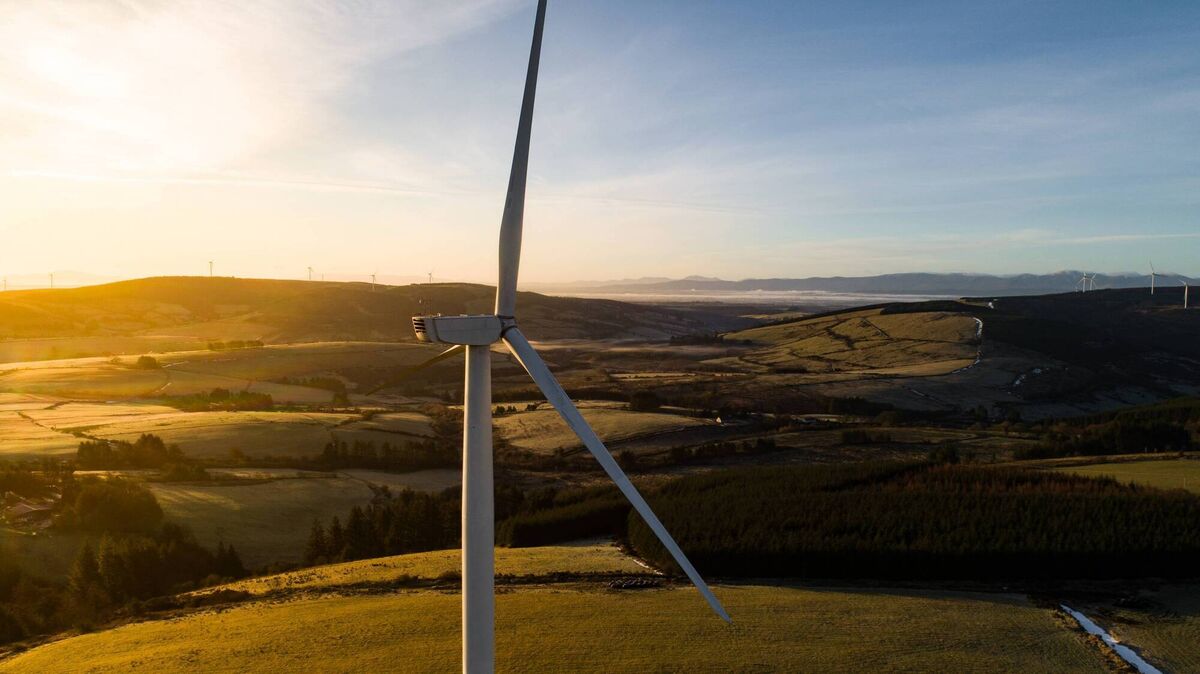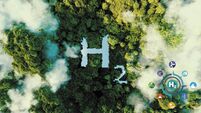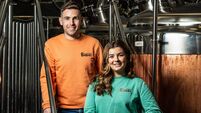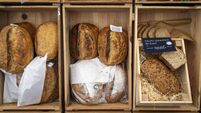Ørsted, committed to helping Ireland on its path to energy independence

An aerial of the Ørsted solar farm view in Garreenleen, Co Carlow. Ørsted has also secured a contract in the Irish Government’s fourth onshore Renewable Electricity Support Scheme (RESS 4). The approved project is a 65 MW Solar Farm in Ballinrea, in Cork City, which has the potential to power 16,000 homes once operational. Ørsted now has a total of 24 advanced or operational onshore wind and solar projects in Ireland. Photo: Darragh Kane
Ørsted’s outlines how the construction of a second Irish solar farm near Carrigaline is the latest in the company's renewable energy development plans. He speaks with journalist Rita de Brún

Investment, production and commerce serve as core foundations of the global economy, fuelling growth, innovation and progress.
By harnessing its sustainable power capacity, Ireland seeks to position itself as a key leader in Europe’s green future, delivering affordable, reliable energy and attracting major investments.
In May, Ørsted began construction on its second Irish solar farm in Ballinrea, located between Carrigaline and Cork City. This follows its first project – Garreenleen Solar Farm in Carlow – which began construction last June. The projects reflect growing confidence in Ireland’s renewable energy sector.
It helps that the Irish investment landscape is welcoming for renewable energy developments and that, according to TJ Hunter, Ørsted's onshore business lead in Ireland and the UK, it continues to be positive.
“We have had an opportunity that has been clear for a couple of decades now,” he says. “As we’ve done a lot with that, the opportunity is now evolving and growing.”
The Climate Action Plan set ambitious targets for 2030: 9 gigawatts (GW) for onshore wind and 8 GW for solar. Energy storage solutions are advancing to ensure wind and solar can be reliably integrated into the national grid.
“These are quite some goals to hit,” says Hunter. “With approximately 6 GW of wind installed, it’s going to be a challenge to get to 9 GW by the end of the decade.”

Nevertheless, he remains optimistic and determined: “In Ireland, there has been immense growth. From a standing start, solar generation has grown fast. In 2019, there was very little installed. Now we are looking at approaching 2 GW installed between the industrial solar that we provide and the solar that is provided via rooftops dotted across the countryside. We are really trying to get the shoulder to the wheel, to hit the target the government expects us to meet by 2030, and this is quite exciting.
“In Ireland, we look to 2030 a lot. But when it comes to wind, that date is almost in the rearview mirror, because it takes so long to conduct environmental studies, get consents and grid connection, and then build. Solar, however, is quicker.”
Along with targets, there is demand. Hunter says Ørsted’s goal is to meet that demand. Naturally, population growth plays a role. ESRI figures project that Ireland’s population will exceed 6.106 million by 2040 under the baseline scenario. Hunter notes electricity consumption could double in that period. “Because we have been at this a long time and had a lot of success, we can meet that demand, as we have the resource – be that wind or solar – and the individuals with the necessary skillsets as well.”
Acknowledging the Government’s “really positive” role in completing Price Review 6 (PR6), he says: “PR6 provides more financial support than previously, to bodies including Eirgrid and ESB Networks, to build out the energy infrastructure this country needs.”

Asked what other countries think of Ireland’s investment environment, Hunter replies: “They see the continuity and consistency of the annual Renewable Electricity Support Scheme (RESS) auctions. They see the natural energy resource, the government targets, and grid investment ramping up, as well as the skills that are here.”
He’s rightly proud of his work and that of his team: “We are credible. We know what we are doing. We have been at it a long time and we do it well. Here in Cork, we had 60 people when Ørsted acquired us in 2021 and we now have over 100. We are the headquarters for its onshore business in Europe.
"Ørsted’s European onshore business head sits in Cork. Its business legal, financial and commercial centres are here as well. It’s a great success story, reflecting not only the ability of the Cork-based team, but also Ireland’s capabilities in renewables.”
On Ørsted’s renewable energy deal with DCC-owned Flogas, he says: “Ørsted is taking the green energy from Knockawarriga wind farm and providing that to Flogas, which is connecting that green energy to over 20 small and medium enterprise customers. With Flogas, we are providing a pathway so that they can get the green energy they want. It’s about matching that wind farm's generation to demand.”
Data centres are a divisive topic in Ireland. CSO figures show their share of total metered electricity consumption rose from 5 per cent in 2015 to 22 per cent last year. Research by Savanta found that 86 per cent of those polled agreed new data centres should only be built if powered by renewable energy sources.
Hunter takes a pragmatic view: “Data centres are now part of the fabric of our society. They are enablers, not only in society, but also in business. Our job is to provide green energy to those who need it. Data centres are among the customers that need it. So are pharmaceutical plants and medical device companies. We want our piece of that value chain to be low-cost, secure, and clean energy.”
On EU and national support, Hunter notes that the Renewable Energy Directive III (RED III) is a positive from Europe.
“The cascade that comes down from there and its conversion to a national level – and from there to regional and local levels – is really important. A lot of good work is being done there, a lot of good engagement on this by the Government. But we can’t lose focus. Dialogue between government and industry, to make these massive infrastructural investments is really important.”
Highlighting the consultation on the national territory mapping initiative under RED III Article 15b.C, he says: “This initiative is fundamental to climate energy, security and stability. Right now, it looks as though local authority development plans may be used. Consultation is key. But it’s imperative we listen to feedback that is less about the mapping and location and more about encouraging that all areas be open to consideration.”
Approximately 78 per cent of Ireland’s land is privately owned. Asked whether he can envisage a time in the future when, for the common good, compulsory purchase orders might be introduced to facilitate future mapping of lands earmarked for renewable energy, he says he can’t. “Nor would we be particularly supportive of that either,” he adds.
“Right now, it is simply about designating areas favourable for renewable energy. What we really want is that the mapping should encourage all areas to be open to consideration, with precise guidelines.
“Our perspective here is that we bring those guidelines and put them in place for wind, solar, and energy storage, then assess projects on a case-by-case basis across those territories. That way it is clear for communities, landowners, developers, and consenting authorities. We move forward only when everybody knows what they are dealing with.”

Ultimately, Hunter says, it is essential that we maximise the opportunity presented by the country’s natural resources.
“In Ireland, we have wind and solar resource, and demand. We are a growing economy with a growing population, and we are electrifying. Having demand for the resources we have is an advantage. So too is having highly experienced people who know how to develop, construct, and operate projects.
“We see its positive impact on the system. Demand is changing as individual and industry usage changes. Previously, demand was highest in winter. Now we see high demand in summer, and solar contributes to that.
“As a country, we have seen opportunity, and we have been taking it. We now have the opportunity to lean in more and gain the energy independence we need. Our energy price is set by imported gas, rather than the energy we have in Ireland. As developers, we are investing not just in projects but in a future spanning multiple generations. We are developing our part, and Eirgrid and ESB Networks are developing theirs.”
That move towards energy independence, Hunter says, is a step-by-step, iterative process.
“We want energy that’s affordable, reliable, and clean. Project by project, our portfolio will deliver on that.”







